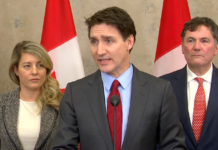Alberta and British Columbia are on track to pursue diametrically opposed reforms to their provinces’ healthcare systems.
The two approaches accentuate the diverging conservative and socialist governing philosophies embodied respectively by the Alberta UCP and the BC NDP.
Yet only time will tell which reform will succeed and deliver the most important result – better healthcare outcomes for Canadians.
Alberta Premier Danielle Smith has emerged as an outlier in Canada’s universal healthcare landscape, steering the province towards a decentralized approach that promises more flexibility and hopefully, improved patient outcomes.
Meanwhile, as the dust settles around the hasty implementation of British Columbia’s Bill 36 – the Health Professions and Occupations Act, a careful examination of each plan becomes necessary.
Decentralization, by its very nature, promises to herald a more flexible and adaptable healthcare system. At least, that is the claim made by the Alberta UCP.
Accessing timely and proper healthcare in Alberta is becoming increasingly challenging due to long emergency room wait times and a decreasing number of doctors accepting new patients. In May 2022, there were 390 doctors accepting new patients, but this number has dropped to around 190.
The Alberta Medical Association, notes that some departments in the capital city are operating well over capacity, with patient numbers being 150% overcapacity.
Meanwhile, in BC a recent survey on primary care in British Columbia revealed that 25 percent of residents lack a regular family doctor, and even those with one face challenges in accessing timely care. The survey also highlighted concerns about the extended wait times for surgical care, with a total median wait of 25.8 weeks, surpassing what doctors deem medically reasonable.
Alberta’s preliminary plan, as expressed by Smith last week, includes radically altering the monolithic structures of the past – a particularly curious approach for a conservative government that often touts the benefits of keeping fences as they are before proceeding to tear them down.
Yet by streamlining Alberta Health Services (AHS) into four specialized areas, Premier Smith maintains that it will create a more responsive and patient-centric system.
Under the new scheme, responsibilities previously managed by the AHS will be spread among specialized organizations, each dedicated to a specific division of healthcare.
Albeit, this has opened up the Alberta UCP government to attacks, particularly, the ever-pernicious claim that conservative governments seek to privatize Canadian healthcare, a claim which Smith has denied.
Moreover, decentralization serves as a bulwark for individual physicians’ autonomy, one that is particularly threatened by BC’s Bill 36.
Critics argue that the BC NDP’s centralization efforts could lead to a lack of transparency and increased government control over individual physicians. Those critics include the BC College of Family Physicians, who blasted the province’s NDP government for passing the bill without adequate debate.
In the context of recent controversies surrounding vaccine mandates, concerns arise about potential limitations on doctors’ ability to voice dissent against perceived government overreach as pointed out recently by the Conservative Party of British Columbia.
Bill 36 requires that all physician colleges be amalgamated from 15 different bodies into six.
One doesn’t have to look too far back into history to see how professional colleges were at the forefront of enforcing vaccine mandates and towing the lines of acceptable opinion.
Of course, some performed more amicably than others in preserving freedom of expression, but that variety of response, when it comes to following government orders, could vanish under centralization.
While centralization might lead to quicker decision making, as the BC NDP promises, it risks placing the final decision when it comes to the wellbeing of patients more in the hands of appointed bureaucrats and not their primary care physicians.
All of these things considered, Canadians should be hopeful to see provinces provide options when it comes to the type of healthcare that’s available from coast to coast.
With risks, there come rewards and while both healthcare reforms still remain in their test tube stage, only one path will succeed in getting us out of the current crisis.





















